D. S. & W. Hosiery Company filed a charter of incorporation in June of 1917. The three men who founded it – Daniel J. Driscoll, William W. Staudt, and George S. Weinerth, had extensive experience in the textile industry by the time they partnered together. In the charter the shares of the company were split; Driscoll 280, Staudt 620, and Weinerth 80, with the company’s capitol being $100,000. D.S. & W. employed around 250 people shortly after opening in 1918.
Daniel J. Driscoll
Driscoll, the oldest partner at age 55, had been involved in various businesses in Berks County. He started his first company in 1896, which manufactured seamless steel tubes, the first of its kind in the country. As he was retired at the time of this engagement, his involvement was likely as investor. Unfortunately Driscoll died only two years into this venture at his home at 224 N. 5th Street. His March 29th, 1919 Reading Eagle obituary claimed his death was the result of a nervous breakdown caused by the death of his only son, James, a few months prior.
William W. Staudt
William Staudt was 46 years old and had similar experience in the textile industry when D. S. & W. was formed. He served as president of two other mills – Chancellor Hosiery Mills and Staudt Knit Hosiery Mills. William’s son Harold was president of D.S. & W. at the time William died in 1948 and continued in that role until his own death in 1962.
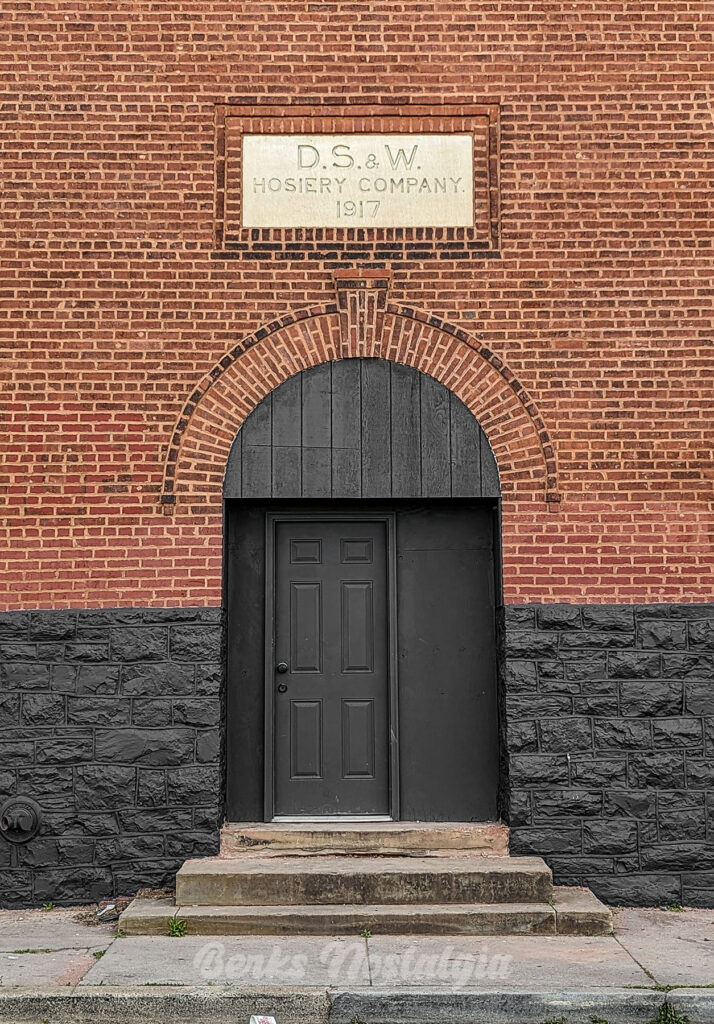
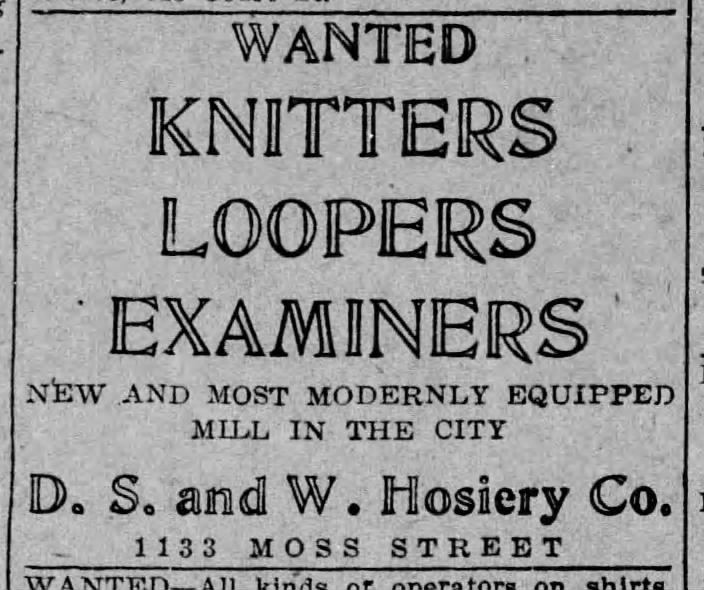
George S. Weinerth
George S. Weinerth, only 30, began his career as a foreman, but quickly worked his way to Superintendent of the Berks Knitting Mills in the Riverside section of the city. Weinerth was the inventor of the group, obtaining his first patent at the age of 24 in 1912 for his “high spliced heel and sole floating threat cutting and turning machine“. He again obtained a patent in 1930 for his “multi-treating attachment for winding, knitting and similar machines” according to a September 27th, 1930 Reading Times article. Weinerth also owned two other businesses; Weinerth Manufacturing Company and Weinerth Machine Parts Company. He died after retiring in 1954.
Happenings at D. S. & W. Hosiery
The January 3rd, 1919 Reading Times describes a harrowing situation where a worker named Rosie Morris almost lost her head in an elevator accident at D. S. & W. According to the article Rosie was waiting for materials to come from another floor and stuck her head through the gates of the elevator to see whether it was on the way down. Unfortunately it was, and her head was pinned between the elevator and the floor. Luckily the operator was able to stop. Rosie eventually recovered from her injuries and lived a few more decades to tell the tale.
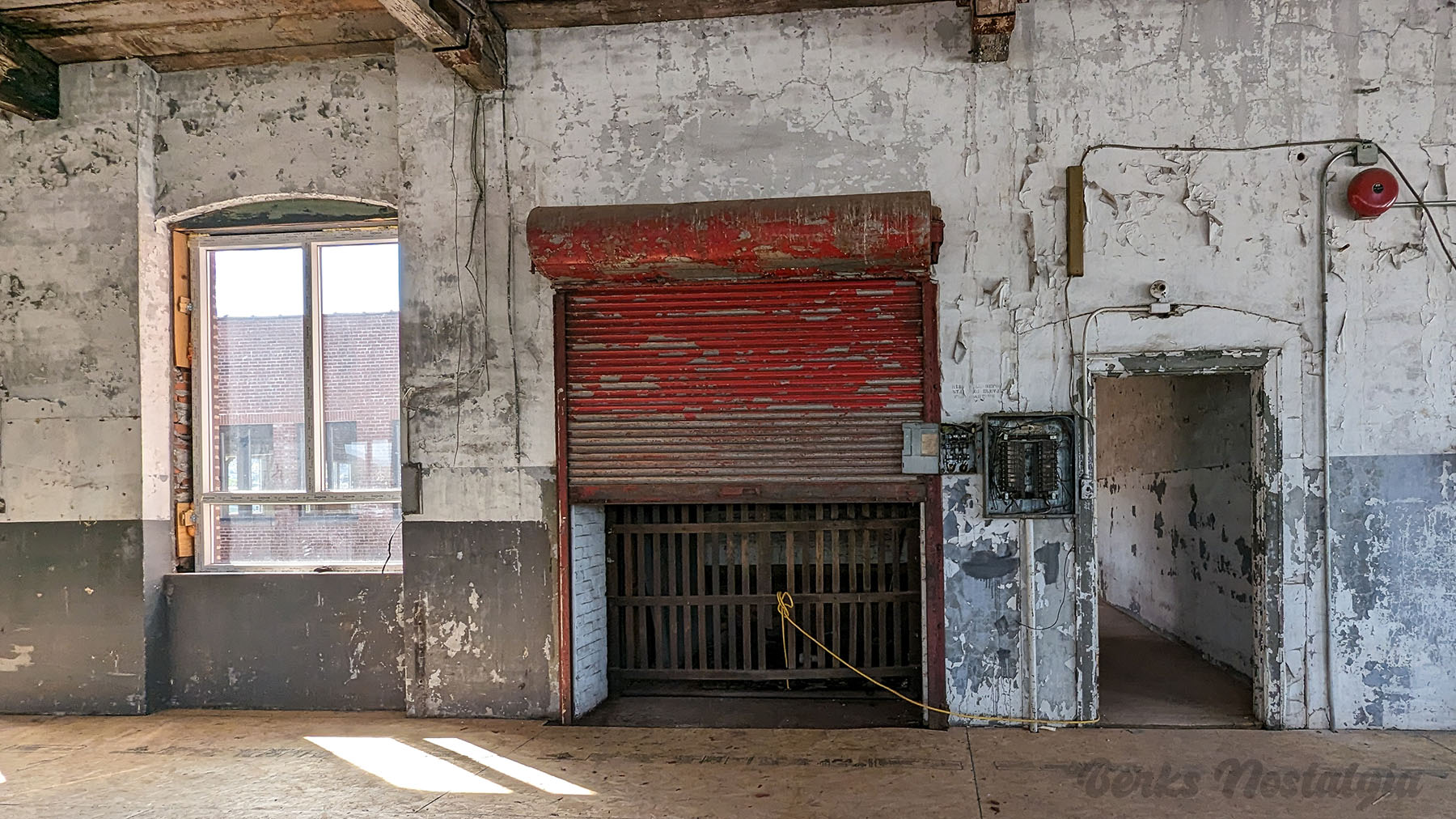
The 1930s were tumultuous times for the textile industry due to the emergence of unions and workers rights in the wake of the Great Depression. In 1933 strikes turned violent for the first time at Berks County knitting mills, including D. S. & W. The August 2nd, 1933 Reading Times reported that 23-year-old worker Miss Mary Mays was drug from the car of Harold Staudt, son of owner William Staudt, and violently disrobed. The strikers, apparently angered at her rendezvous with the owner’s son, ripped the clothes off of her body and left her naked on the street. Harold and William tried to help but were also severely beaten with Harold being knocked unconscious.
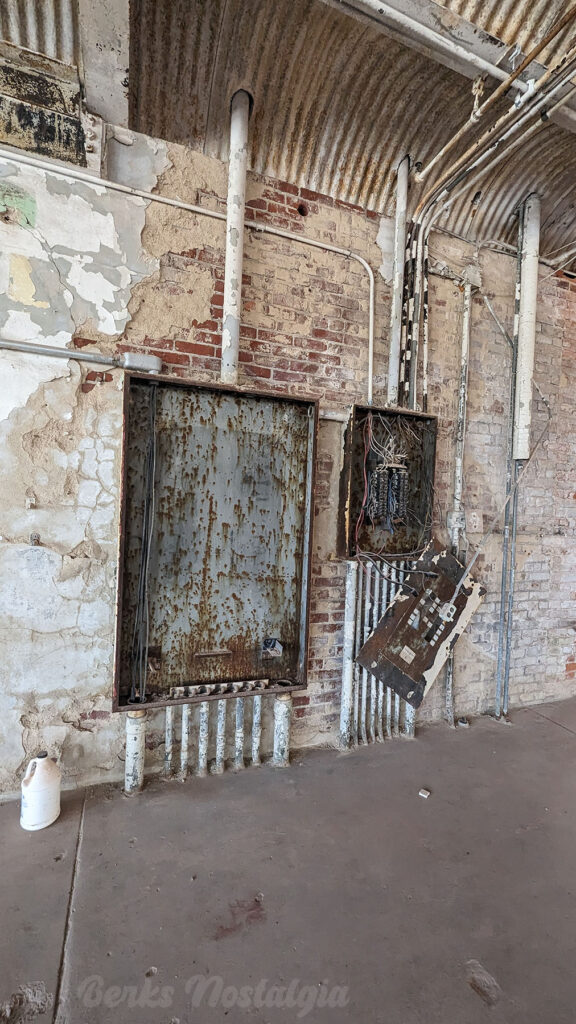
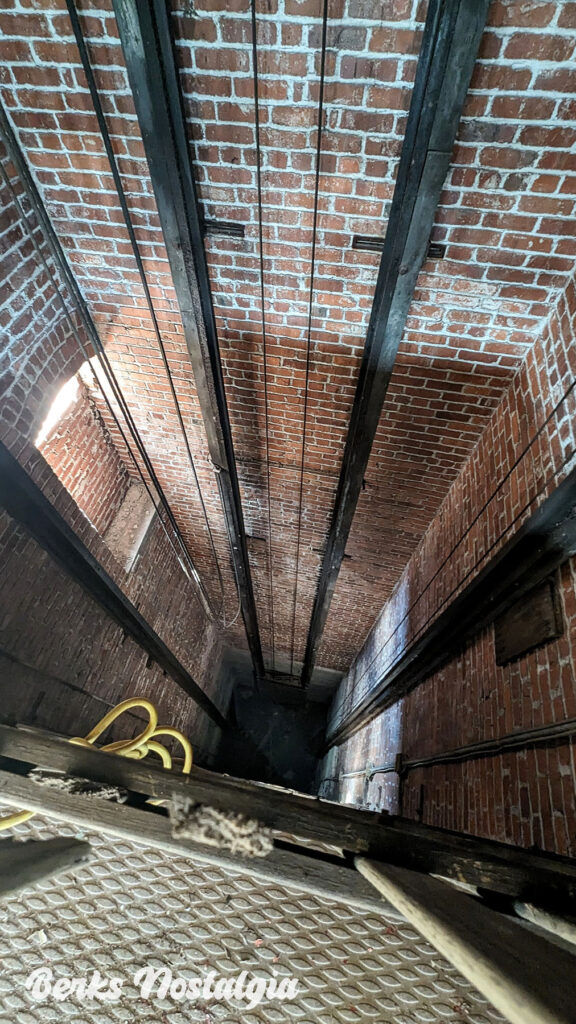
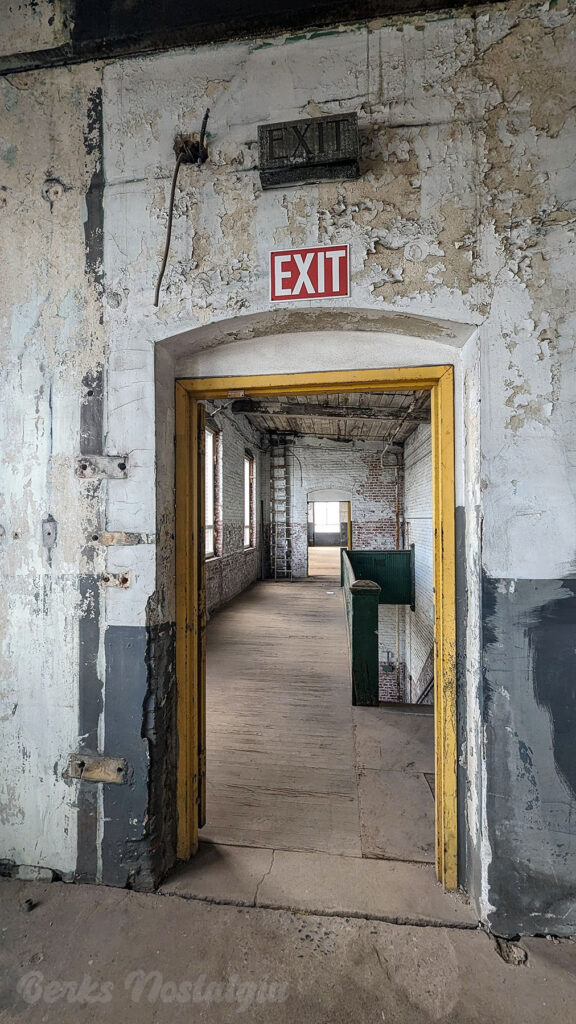
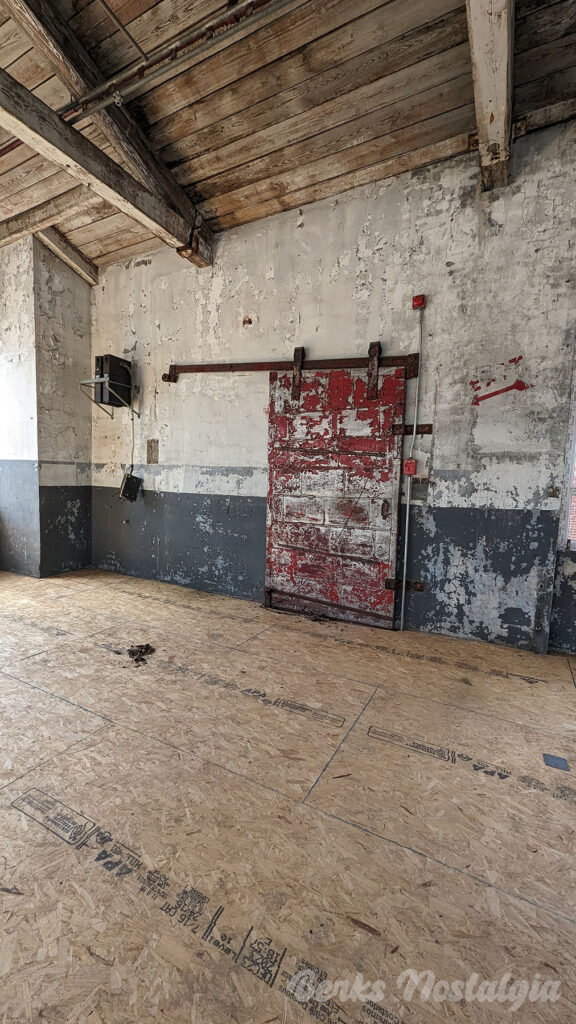
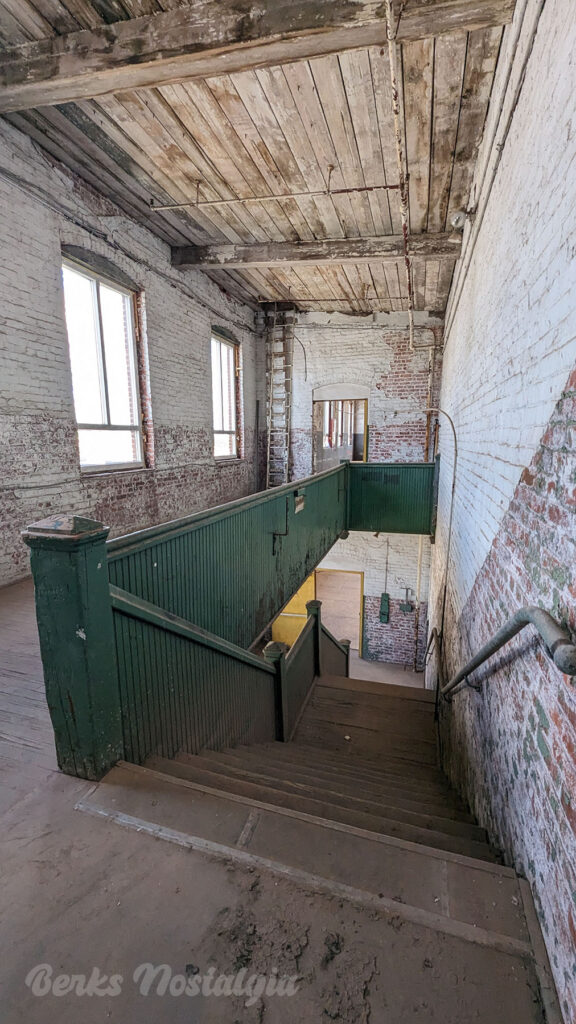
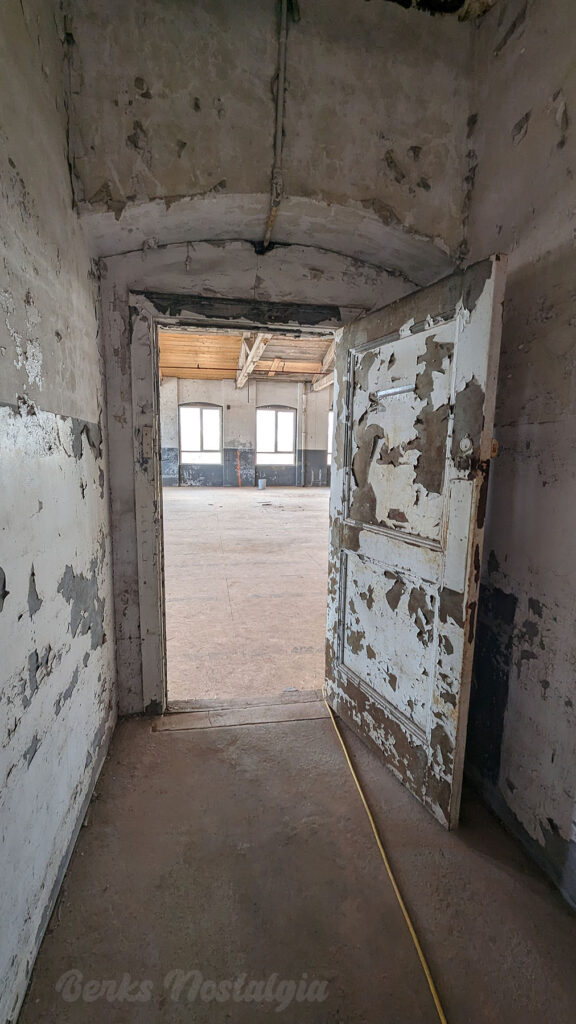
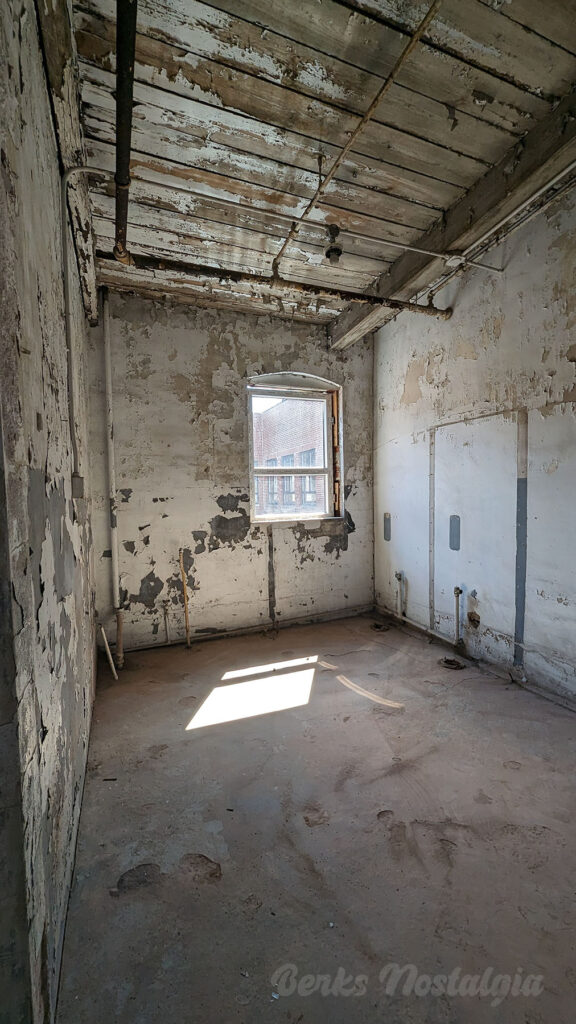
Social unrest settled down during WWII in the 1940s. Per the advertisement below, it seems like D. S. & W. opened their own factory store sometime in the late 1940s.
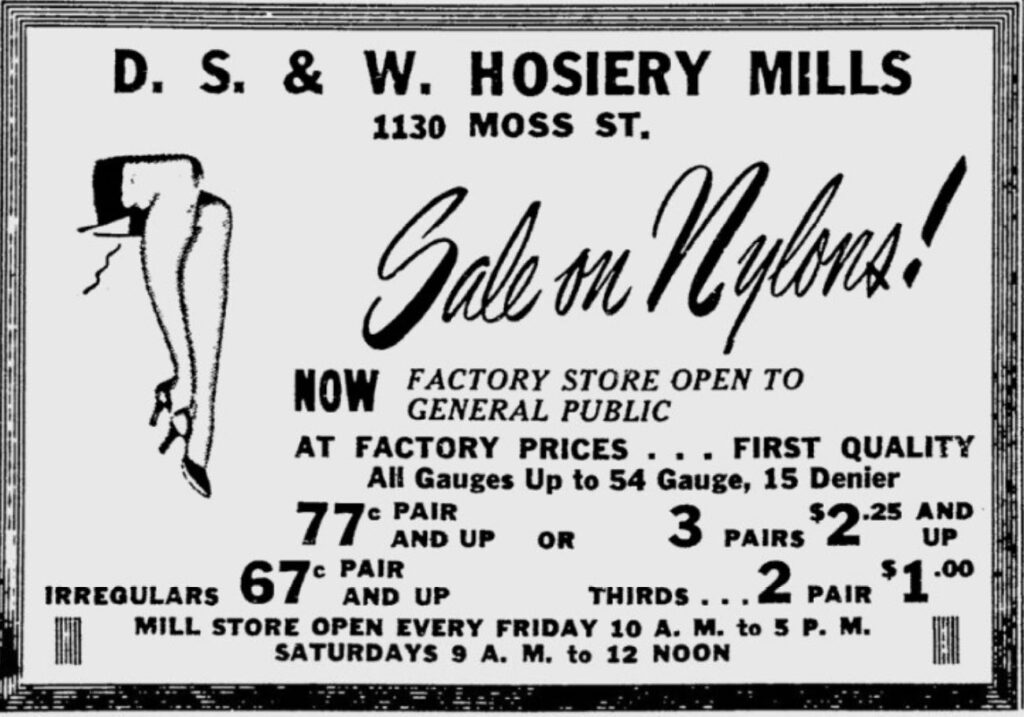
Business began to decline in the 1960s. With increasing competition from national manufacturers and changing trends in fashion, smaller companies who struggled to make ends meet were often swallowed up by larger companies. In 1967 D. S. & W. was bought out by a larger New York textile manufacturer. They moved some machinery to their New York mills and sold the Moss Street mill buildings the same year.
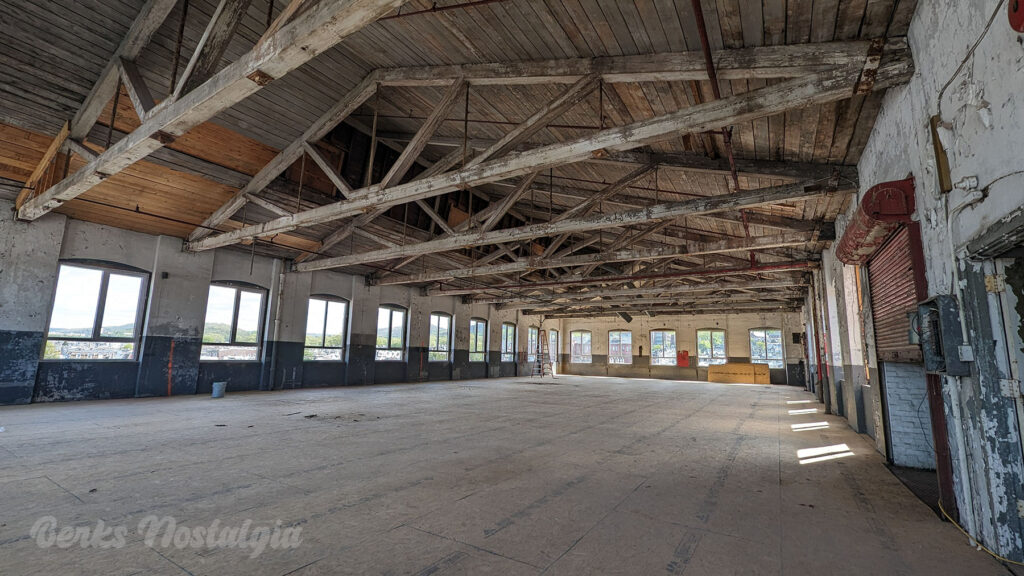
By 1971 a company called Bobbi Rogers Industries, Inc. advertised factory outlet sales at the property in the Reading Eagle. They marketed themselves as the manufacturers of apparel brand called “Cousins“. This means nothing to me, and a quick Google search reveals no hits, so if anyone knows anything about “Cousins” clothing feel free to drop a comment.
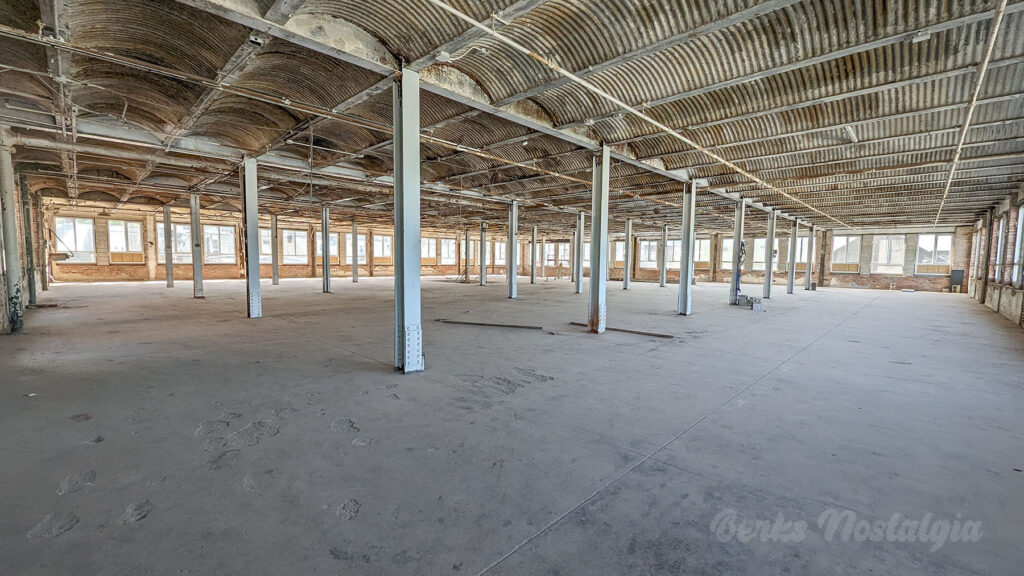
At some point this structure and the one across Moss Street became known as the Great Factory Store complex. It was a popular destination for those who took advantage of outlet pricing, but parking was a problem that plagued the location. The only option was street parking and neighbors quickly grew tired of the crowds it drew.
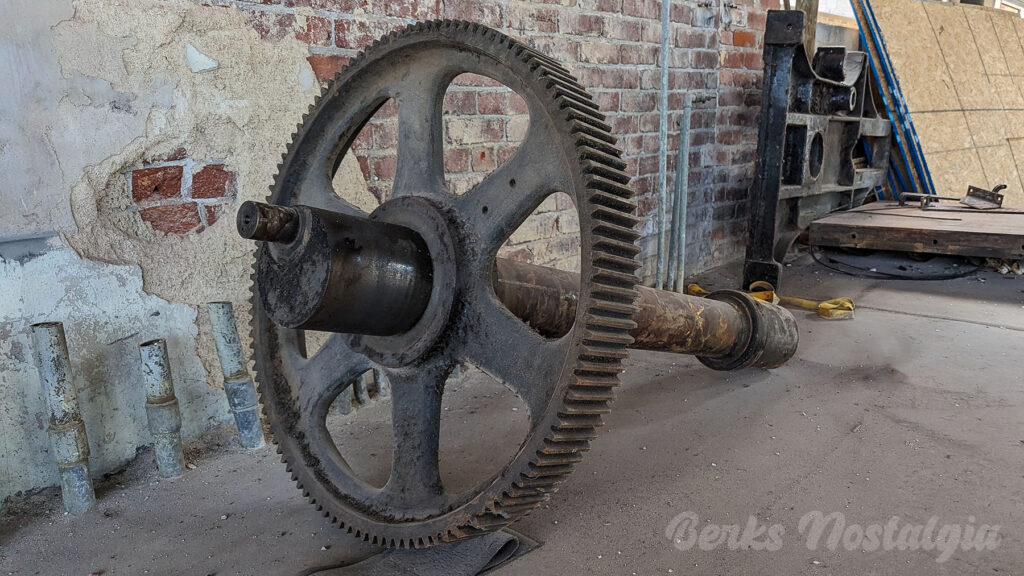
The Great Factory Outlet complex was abandoned in June 1985. In the following decade a few plans were announced to rehabilitate it, including an incubator for small businesses, but nothing came to fruition. On May 18th, 1990 the Reading Eagle reported that residents in the area were complaining that trespassers frequently entered the abandoned buildings and that some youths might be squatting there. The article also states that nearby residents were concerned about the condition of the buildings and Reading Mayor Warren Haggerty Jr. is quoted as saying “this sounds like a tragedy waiting to happen“.
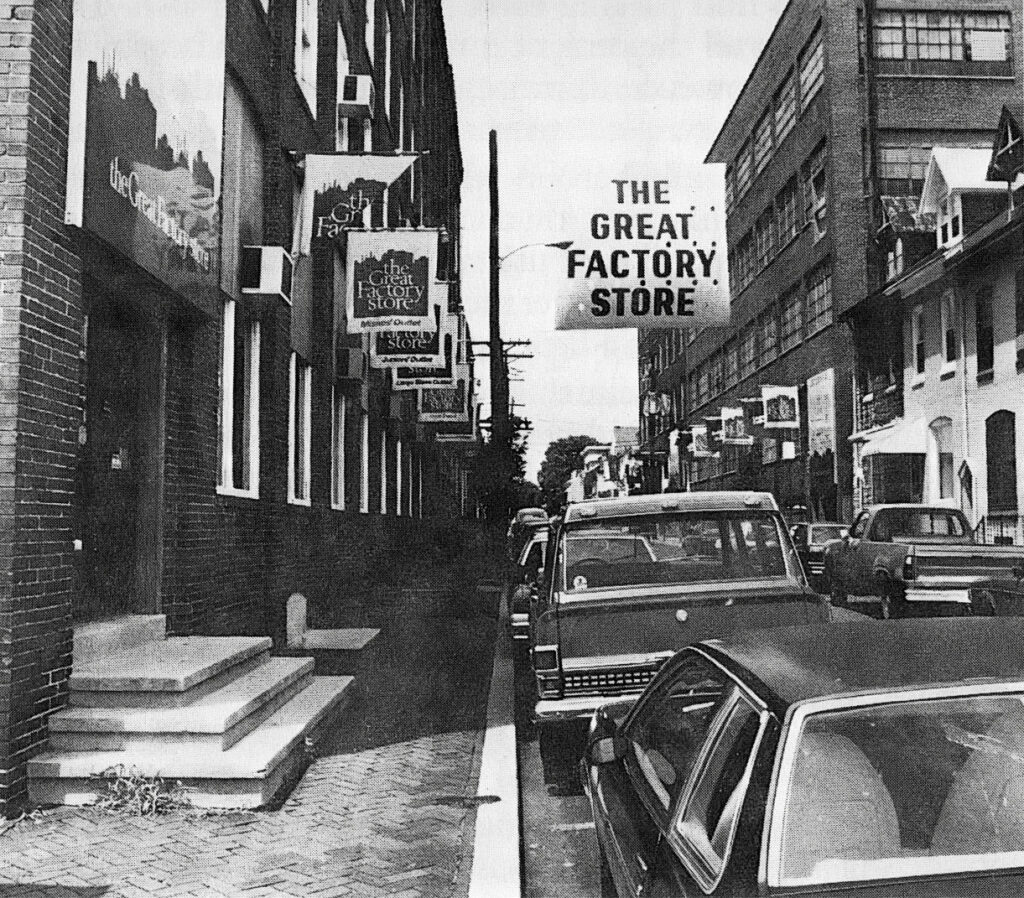
Moss Street Outlet Fire
On the evening of May 25th, 1996 the mill structure on the west side of Moss Street was set ablaze. The May 28th, 1996 Reading Eagle stated that the origins of the fire were near the elevator shaft, but barring someone coming forth with information the perpetrator would never be caught. A total of twelve homes adjacent to the building were damaged and roughly 50 people were displaced. To date it is one of the largest and most intense fires the city has ever experienced.
Redevelopment
The 1125-1151 Moss Street structure was unscathed in the fire, but it would remain largely abandoned nearly three more decades. The current owner purchased the property in 2022 and is in the process of renovating the structure into 55 apartment units.
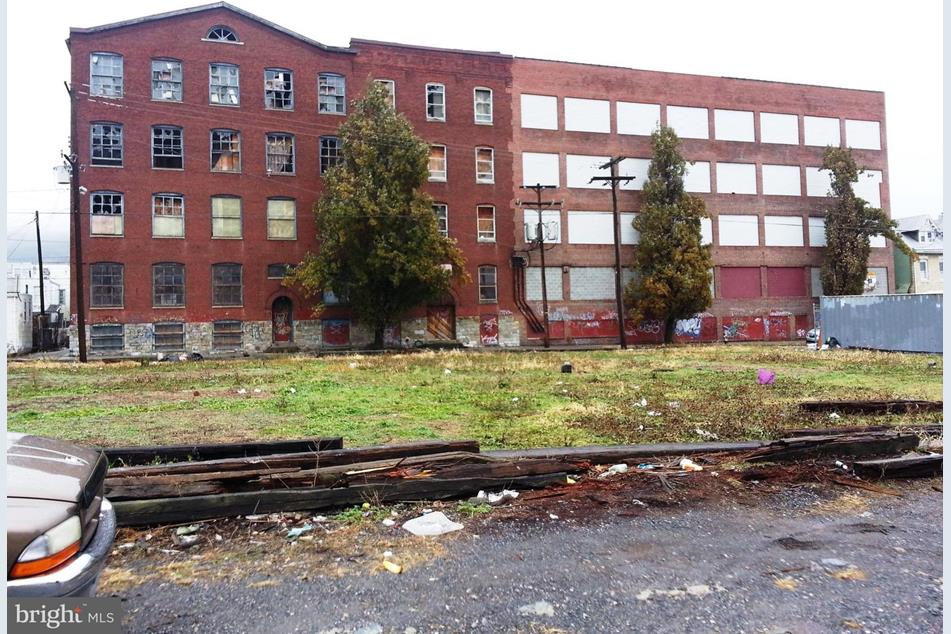
So far most of the work done is exterior – including paint and new windows. The basement and first story of the 1928 addition will be utilized as a parking garage for tenants with additional parking in the lot across the street.
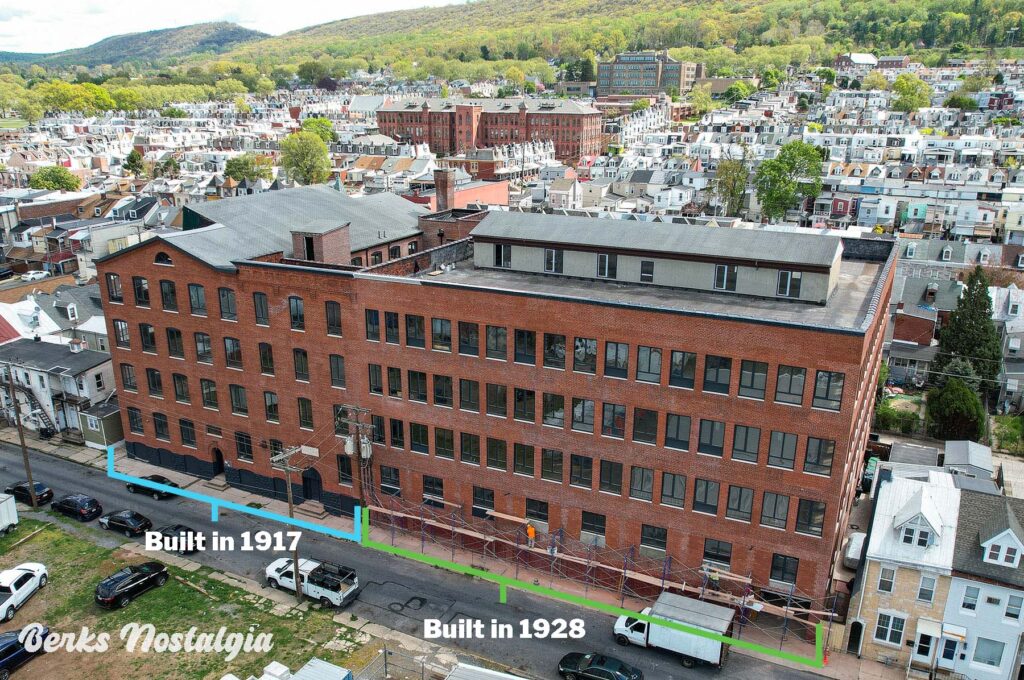
The light well, located in the center between the older and newer parts of the structure, will eventually become a courtyard for residents to enjoy.
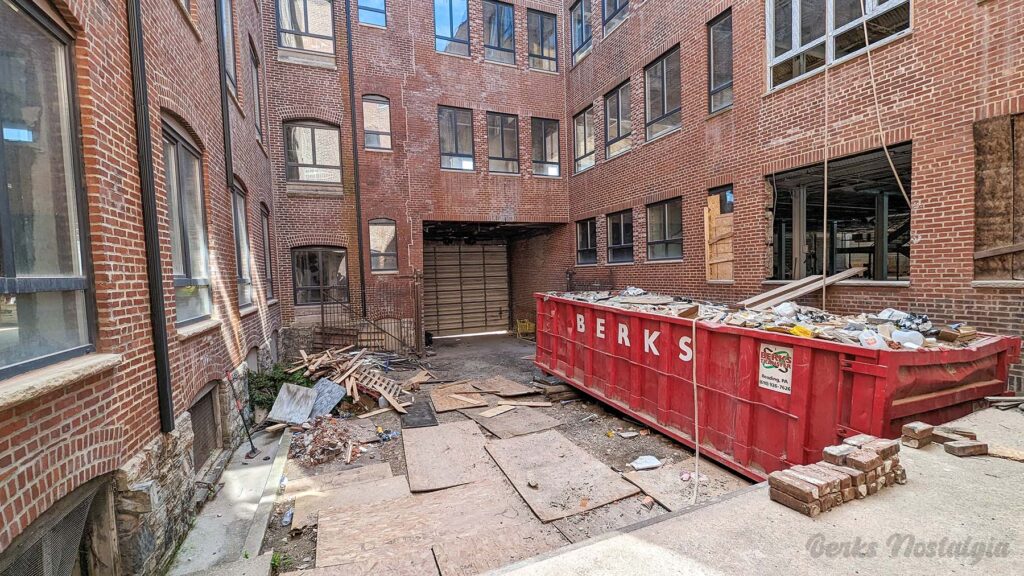

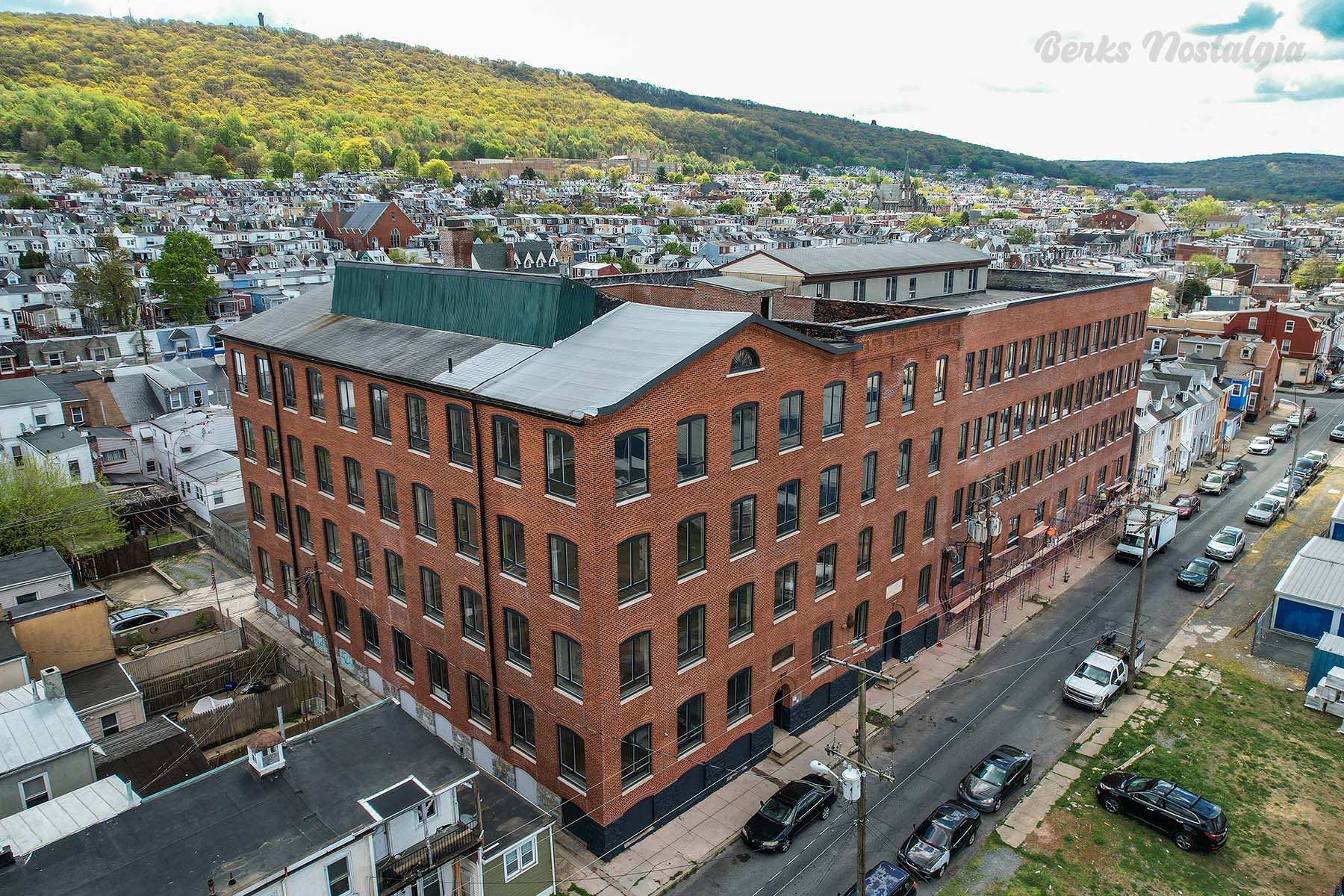
My Mother, five Aunts, and Uncle worked there during and after WWII. It was a fire trap back then! I remember being there and the floors were soaked with grease from the stocking machines. They worked on the third floor..
years later it became an Outlet
Oh wow, I remember watching the fire from the Pagoda.
Cousins was a business of Bob and Roger Rachman (Cousins, B&R Apparel, and others), who were cousins and the son and nephew of Frank Rachman, the founder and operator of Rachman Manufacturing, who owned much of the building/sq footage of the buildings in the Moss Street area. After Franks death, his wife Pearl owned much of Moss Street and collected rent on vitually all of the stores/space we knew as the Moss Street Outlets. The Rachmans invented the concept of ‘outlets’, right in Reading and Wyomissing, Pa.
Thanks for the insight Mark, sounds like a story in itself
Always more to the story! As I saw you attended Philadelphia University, another interesting fact here would be that one of the son’s of Bob, grandson of Frank, attended Philadelphia Textile. Reading’s a small town!
Nice! Textile design was still a fairly popular major when I attended a decade ago. It is my understanding that Thun and Janssen sent their designers to be trained there as well before they started WPI in the 1930s. Everything is intertwined (pun intended) 🙂
Are there any photos of the employees from the 1930-40s? I’m researching family and someone worked there.